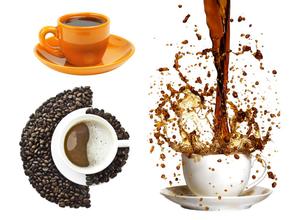Description of the Flavor of Brazilian Hilado Coffee introduction to the region of Brand production by Grinding Calibration
Description of the Flavor of Brazilian Hilado Coffee introduction to the region of Brand production by Grinding Calibration
There are many large farms in Brazil, which run endless coffee plantations. They use machines to harvest and dry them. They are so efficient in automation that they regard coffee as a general agricultural material and completely abandon the flavor and flavor. As a result, many select coffee companies simply do not sell Brazilian beans so as not to demean themselves. In select coffee shops, there are still occasional Brazilian "santos" coffee, but they are all "Bourbon Santos" (bourban santos) rather than low-priced "Ping Dou Santos". Santos is a descendant of the bourbon species, hence the name for the port of Santos export. In the first three or four years before the coffee tree began to bear fruit, the beans were small and curved, with excellent flavor, and became the "Bourbon Santos". After that, the beans get bigger and flatter.
American coffee machine: atmospheric pressure extraction
Brazilian coffee taste with a low sour taste, with the sweet and bitter taste of coffee, the entrance is very smooth, and with a hint of grass, slightly bitter in the fragrance, smooth and smooth, the aftertaste can make people comfortable and pleasant. There are no outstanding advantages for Brazilian coffee, but there are no obvious defects. The taste is mild and smooth, the acidity is low, the mellow is moderate, and there is a hint of sweetness. All these soft flavors are mixed together. To distinguish them one by one is the best test for the taste buds, which is why many Santos fans love this kind of coffee, just because it is so mild and ordinary. Santos is suitable for ordinary baking and brewing in the most popular way. It is the best raw material for making Italian espresso and all kinds of fancy coffee.
It is usually divided into two layers, the upper layer is a funnel-shaped container with a filter paper or metal filter, and the lower layer is a glass or ceramic coffee pot. The American coffee machine also makes the hot water flow through the coffee powder into the lower coffee pot to extract the coffee, but the difference is that the hot water is at atmospheric pressure. In addition to cooking coffee, you can also make tea.
American coffee machine, no pressure, only black coffee, can not make other fancy coffee. Italian coffee machine, there is a certain degree of pressure, you can use pressure to make ESPRESSO coffee with quite thick coffee oil. Some original espresso can be served with milk, latte, milk foam, cappuccino, and other fancy coffee; on price: American coffee is generally less than 1000 yuan. Italian coffee machine, the price ranges from a few hundred to more than 100,000 yuan
There are many large farms in Brazil, which run endless coffee plantations. They use machines to harvest and dry them. They are so efficient in automation that they regard coffee as a general agricultural material and completely abandon the flavor and flavor. As a result, many select coffee companies simply do not sell Brazilian beans so as not to demean themselves. In select coffee shops, there are still occasional Brazilian "santos" coffee, but they are all "Bourbon Santos" (bourban santos) rather than low-priced "Ping Dou Santos". Santos is a descendant of the bourbon species, hence the name for the port of Santos export. In the first three or four years before the coffee tree began to bear fruit, the beans were small and curved, with excellent flavor, and became the "Bourbon Santos". After that, the beans get bigger and flatter.

Important Notice :
前街咖啡 FrontStreet Coffee has moved to new addredd:
FrontStreet Coffee Address: 315,Donghua East Road,GuangZhou
Tel:020 38364473
- Prev

Different flavors of Katim Coffee beans-how to Bake Blue Mountain Coffee
Different flavors of Katim Coffee beans-how to roast Blue Mountain Coffee later, with the support of my friend Wang Bo, I specially stayed with him for half a month. I went to the coffee field 1530 meters above sea level for the first time in the roar of the tractor, saw his Tree of Hope, and picked some Katim red cherries separately.
- Next

Causes of coffee desolation in southeastern Ethiopia
Coffee is barren in southeastern Ethiopia because coffee is Ethiopia's most important export cash crop and the main source of Ethiopia's foreign exchange earnings. Ethiopia's coffee exports account for about 3% of the world market, making it the eighth largest coffee exporter in the world. Coffee exports increased steadily from 58000 tons in 1990 to 110000 tons in 1995-1996.
Related
- Detailed explanation of Jadeite planting Land in Panamanian Jadeite Manor introduction to the grading system of Jadeite competitive bidding, Red bid, Green bid and Rose Summer
- Story of Coffee planting in Brenka region of Costa Rica Stonehenge Manor anaerobic heavy honey treatment of flavor mouth
- What's on the barrel of Blue Mountain Coffee beans?
- Can American coffee also pull flowers? How to use hot American style to pull out a good-looking pattern?
- Can you make a cold extract with coffee beans? What is the right proportion for cold-extracted coffee formula?
- Indonesian PWN Gold Mandrine Coffee Origin Features Flavor How to Chong? Mandolin coffee is American.
- A brief introduction to the flavor characteristics of Brazilian yellow bourbon coffee beans
- What is the effect of different water quality on the flavor of cold-extracted coffee? What kind of water is best for brewing coffee?
- Why do you think of Rose Summer whenever you mention Panamanian coffee?
- Introduction to the characteristics of authentic blue mountain coffee bean producing areas? What is the CIB Coffee Authority in Jamaica?

